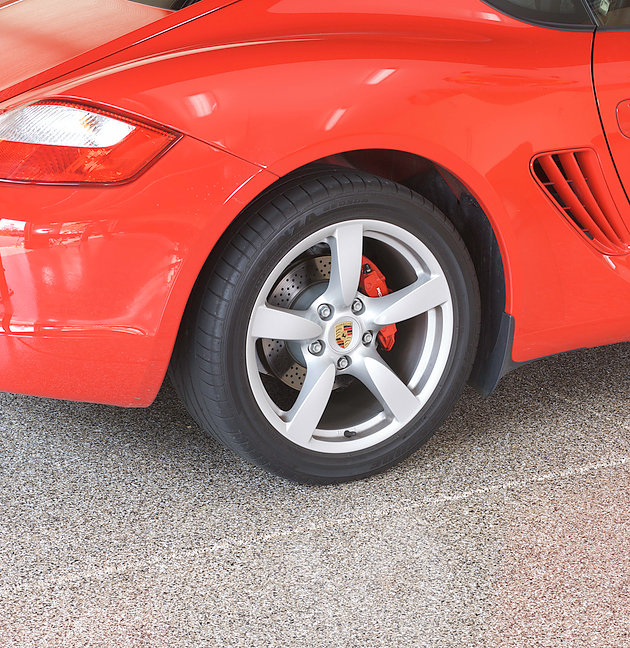Garage Floor Coatings: Epoxy vs Polyaspartic

I recently had a customer trying to decide between our company and a competitor. My competitor was offering her a one-day garage floor coating application using all Polyaspartic (also know as Polyurea) materials. He had told her that the Polyaspartics bonded to concrete better than Epoxies. Based on years of experience, I knew there was no proof to support my competitor’s claims. Here is how I responded:
Along with providing a more durable surface and better chemical and abrasion resistance, Polyaspartic materials have one very special benefit – they are UV Stable. That is, they will not yellow or discolor over time. Therefore, they are most beneficial when used as the clear top coat (final layer) in a garage floor coating system. UV Stable means there will be no effect from prolonged exposure to sunlight. Unlike Epoxies which will yellow and discolor over time.
However, when it comes to the base coat component of the system (the material layer applied directly to the concrete after prep), we recommend only Epoxies be used. Why?, because the fact is – nothing has ever been proven to bond better with concrete than Epoxy. The reason is simple, Epoxies cure much slower than Polyaspartics, therefore they can penetrate much deeper into the pours of the concrete before curing creating a much stronger adhesion with the concrete. Polyaspartic were not developed for bonding strength, they were developed for UV stability. In addition, they were engineered to be applied nice and thick to they could be applied over the vinyl flakes in a typical decorative full flake floor system.
Over the years we have had first hand experience with Polyaspartics. We were enticed early on by material suppliers promoting new Polyaspartic systems. Their pitch – the materials cure quickly so you could compete a floor in just one day. That’s right, just one trip out – imagine how much more profit you will make and how many more bids you will win when you tell the customer they can have their garage back in one day! It all sounds great until floors start failing a few years later. Polyaspartics simply do not bond well with concrete despite what suppliers say. I can always tell a competitor that lacks experience because they are usually the ones pitching one day floors.
Another drawback of Polyaspatrtics is that they are up to 25% less solid than comparable Epoxies. This means they contain solvents (sometimes toxic) that evaporate out as the material cures. This means that when the floor dries it will be up to 25% thinner. Example: if the floor material is spread at a rate allowing for a 10 mil thickness, after drying it will only be 7.5 MILS thick. This can effect the longevity of the flooring system. 100% Solid Epoxy materials contain almost no solvents and cure with almost no shrinkage making them a far better choice for the base coat/bonding layer.
My advice is to stick with the materials that have been proven through years of use in typical garage flooring applications. Do your research and you will see that competitors who are differentiating based on how fast they can install your floor are just pushing a lot of marketing spin.
